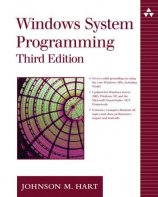Code-Beispiel
Buffonsches Nadelproblem
| Lizenz: | Erster Autor: | Letzte Bearbeitung: |
| k. A. |  Arhuerl Arhuerl |  15.09.2014 15.09.2014 |
'Das Buffonsche Nadelproblem fragt nach der Wahrscheinlichkeit,
'dass eine willkürlich geworfene Nadel ein Gitter paralleler Linien schneidet.
'Es erlaubt unter anderem, die Kreiszahl Pi experimentell zu bestimmen.
'Initialize
Screen (20)
'draw two lines
Line (50, 200)-(950, 200), 15
Line (50,500)-(950,500), 15
'Initialize variables
Dim theta As Double
Dim yoffset As Double
Dim matx As Double
Dim maty As Double
Dim hit As Integer
Dim x As Integer
Dim zahlpi As Double
Dim calcpi As Double
Dim col As Integer
Dim vorzeichen As Integer
'Initialize random numbers
Randomize
zahlpi =3.141592654
'Repeat "Throwing" the needles until x reaches the number of repetitions
While x<1000
If Rnd > 0.5 Then
vorzeichen=-1
Else vorzeichen=1
EndIf
'random position
yoffset = Int (Rnd * 149 *vorzeichen)
'random angle
theta =Rnd * 2 *zahlPi
maty=Int(150*Sin(theta))
matx=Int(150*Cos(theta))
col=col+1
If col>13 Then col=1
'Draw colorized "needle"
Line ((500-matx),(350+yoffset-maty))-((500+matx),(350+yoffset+maty)),col
'findout if "needle" is crossing lines
If (350+yoffset-Abs(maty))<0200 Then hit=hit+1
If (350+yoffset+Abs(maty))>=500 Then hit=hit+1
x=x+1
Wend
'calculate Pi
calcpi=2*(x/hit)
'Print results
Print "throws: "; x
Print "hits: "; hit
Print "PI calculated: "; calcpi
Print "difference to pi:"; (zahlpi-calcpi)
sleep
| Zusätzliche Informationen und Funktionen | |||||||
|---|---|---|---|---|---|---|---|
|
|||||||



 FreeBASIC-Nachrichten jetzt auch über Twitter erhalten. Follow us!
FreeBASIC-Nachrichten jetzt auch über Twitter erhalten. Follow us! Bearbeiten
Bearbeiten Versionen
Versionen